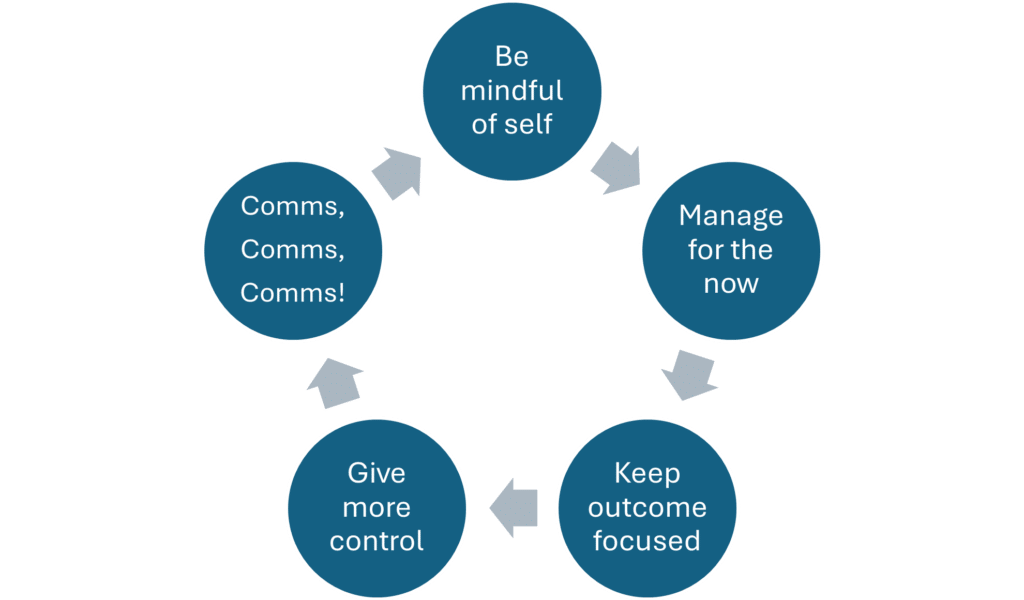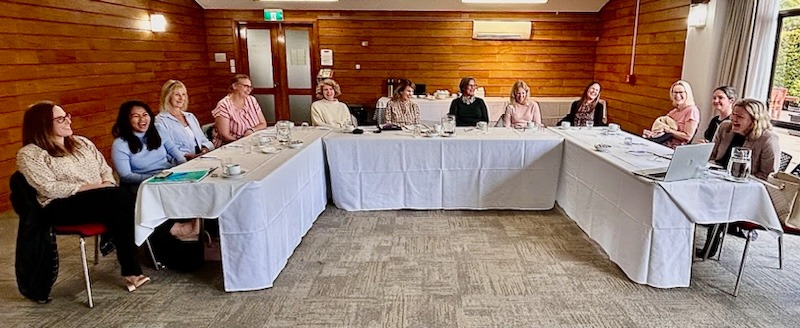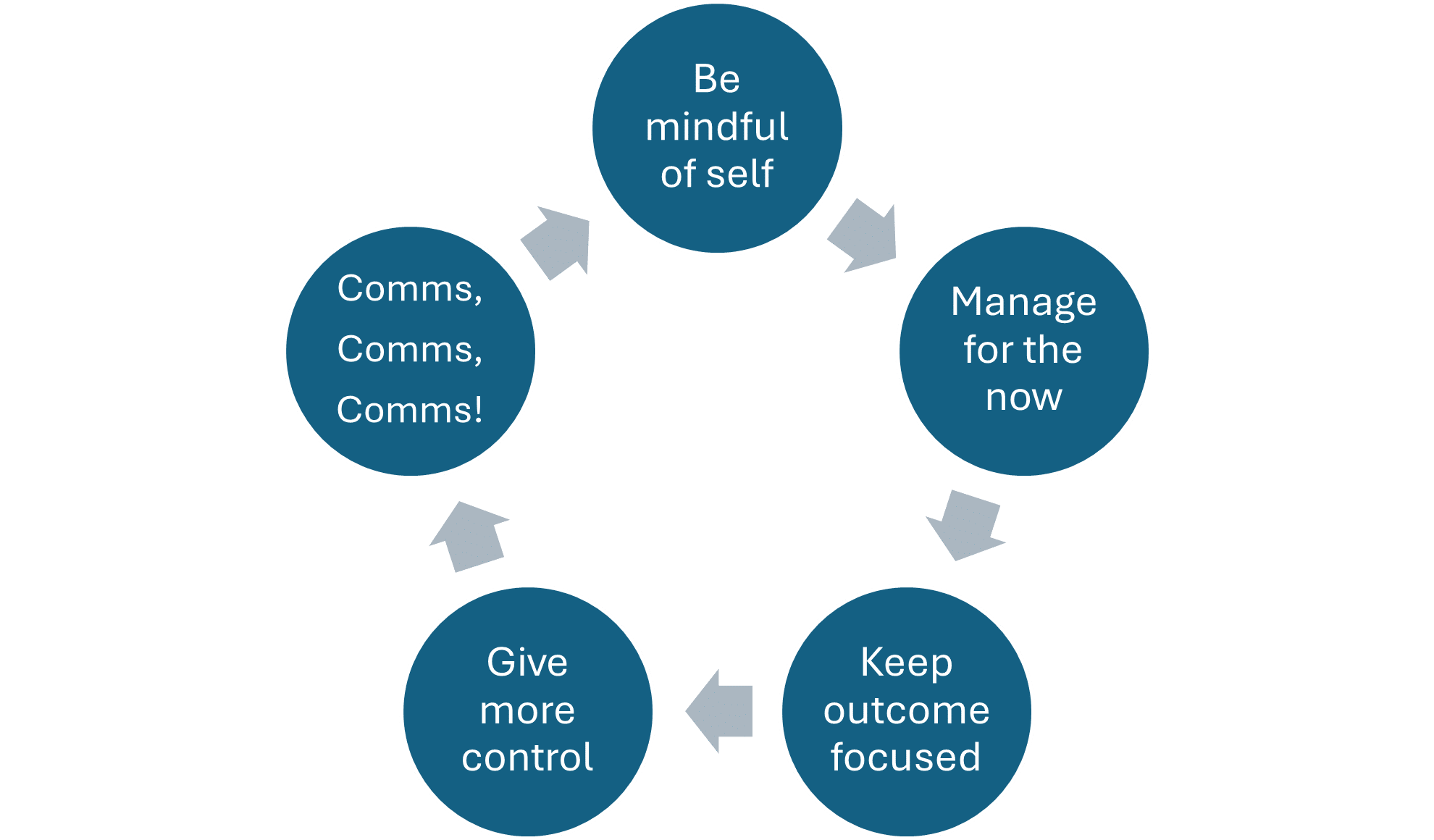HR Trend Update
News Release
5 August 2024
HR Consultancy Sees Significant Increase in Restructuring Enquiries
Leading HR Consultancy Positive People says it has been fielding a surge in enquiries from businesses across New Zealand seeking support with restructuring-related activities.
According to six-monthly data that the company collects, restructuring-related enquiries have more than doubled – up from 8% in the first half of 2023 to 19% for the same period this year.
Positive People Founder and Managing Director Alan Pettersen says the organisation, which celebrates 30 years of business this month, views the increase as a reflection of the challenging economic climate.
“Many companies have held on for as long as possible but can no longer afford to keep paying employees without sales coming in.”
He says most organisations aren’t closing down, instead they are fine-tuning their operations and cost structures through restructuring to ensure survival. Of all the sectors, construction, in particular, has seen significant downsizing and a reduction in hours employees’ work.
“Over half of all enquiries that we have been getting about restructures are coming from businesses in the construction sector.”
Other trends that Positive People has recorded over the past six months include a growth in employment relations issues, up from 22% to 36% of all inquiries.
“Businesses and staff are feeling stressed, which is often the cause of complaints, conflict or misconduct. Employees are far more aware of their rights than in the past, and we have seen a significant increase in representation by Employee Advocates. This creates a real need for expert advice and support on employment matters, agreements and policy development to make sure these are watertight.”
Demand for recruitment support has dropped from 10% to 2%, while inquiries for pro-active HR support jobs such as engagement surveys and leadership development has more than halved – 21% to 10%.
Alan says the outsourcing of HR is on the rise, up from 12% of inquiries to 27%, as businesses recognise that they still need on-going professional HR support to help them through this challenging period.
Reflecting on 30 years of business, Alan has observed some interesting trends over this time, particularly in the area of creating more people-centred organisational cultures.
“We’ve seen HR transitioning from an administrative function to it now being viewed as a key strategic partner in organisations.”
Other key changes Alan highlights include:
- Greater integration of HR as a strategic driver for organisational success.
- An emphasis on flexible working arrangements and an individualised employee experience.
- Leveraging technology for more efficient HR administration.
- A general growth in importance of digital and social media as primary communication channels within organisations.
- Increased focus on Diversity, Equity and Inclusion and a better understanding of the importance of employee wellbeing.
For more information:
Christine Meads
M: 027 294 0823
About Positive People
Founded in 1994, Positive People has been at the forefront of HR consultancy in New Zealand, offering expert advice and support to businesses across various sectors. With a focus on strategic HR solutions, Positive People continue to drive organisational success through innovative and people-centric approaches.
Positive People – Some Insights as we celebrate 30 Years in business!
As the founder and Managing Director of Positive People, I am very proud to let you know that in August this year Positive People will have been in business for 30 years!
What a different landscape it was back then when we started! HR professionals were few and far between and the small to medium sized business sector was crying out for some HR support.
So, working initially from my wife’s dresser in our bedroom, Positive People was launched in August 1994. With a foundation built strongly on integrity, professional competence and client centricity, it has always been about making a positive difference to our clients’ organisations.
I would like to thank our many clients who have supported us along the way. What a great set of businesses!
And of course, a big thank you to our amazing team who set out every day to provide the best possible HR advice and support to our clients.
Insights, learnings & highlights
- A massive swing towards people centred organisational cultures. Workplaces have progressively moved to be employee focused and offering more individualised employee benefits
- HR has progressively morphed from being a predominantly administrative function to a strategic business partner with a high impact on organisational success. HR has gained a strong and legitimate foothold as a key function in organisations
- Right up there has to be the growth and development that we’ve seen in Team Leadership – both individual Managers and Senior Leadership Teams. With our support we have seen them move to embrace what HR can do for them and becoming strong advocates of a people centred culture within their businesses.
- We have been so lucky to have at Positive People a fantastic group of skilled Consultants. They are committed to providing top class HR support to our clients and work so well together. So, the importance of your team sits right up there as a critical and essential component in any organisation’s success.
- Values really matter. Our focus on Integrity, Respect, Professionalism, Transparency, Honesty and Open Communication means our clients gain an HR partner with a high standard of behaviour and competence, who you can trust and who will always have your needs at the forefront of everything we do for you.
- Change isn’t just around the corner. Change is sitting looking at us every day. So, the importance of embracing change, planning for what might be different going forward and making the most of the opportunities it presents is a key driver of success.
- Allied to living with change is the need to be perpetually looking ahead and scanning the horizon to see what might be coming up. And then developing plans to either counter any ill winds, or to optimise any openings that might present themselves.
- Across all decisions, a view through a commonsense lens is imperative. Sometimes the moment takes over and we can lose sight of what is both operationally functional and financially sound. Standing back and then applying the concept of common sense across new ideas, proposed developments and key decisions allows for a reality check.
- An evolutionary approach to mostly everything is a great way to make improvements. This allows for a degree of experimentation and risk taking to take place and allows for innovative exploring. Importantly, being a staged approach, a new idea that doesn’t work won’t sink the ship.
- From day one we have been learning from our clients. This has allowed us to develop and grow ourselves individually and as Positive People. We have shared our learned knowledge across our client base so that all our clients benefit from our multi-Company and industry wide learnings.
- We know that above all else our clients want and expect first class HR support from us at every turn. And so that has always been our number one priority.
- Our 30 years have been about our clients, not about us. And that remains our sharp focus.
We are proud of where we are today and confidently head into the future with plans to constantly improve, innovate and forge ahead as we provide even better HR support and services to a growing client base.
It has been a fantastically enriching journey, and we are super excited as we move into our next growth phase!
August is going to be an exciting month as we celebrate our 30 years in business!
Thank you once again.
Alan Pettersen and the Team at Positive People
Deliver for your team and they will deliver for your business!
Recently one of our team was working with a newly appointed Supervisor, and he asked her advice on correcting some payroll mistakes. The back story was that his team had been working long hours for two weeks to get something urgent completed for a customer and through an administrative oversight hadn’t been paid their overtime. He was livid and sick of being told the office team were “too busy” to help right now. He and his team were on the verge of walking out.
While we managed to calm him down and work through the issue constructively, it did start us thinking about business priorities and reflecting on where your team sit on your priority list?
We act with urgency to deliver for our customers, and we expect our team to do the same…….
But how much urgency do we attach to delivering for our own team?
No doubt your customers don’t have to chase you to respond to emails, fix mistakes or answer questions. That in turn ensures that they trust you, want to work with you again and builds a true customer partnership.
Applying the same principals with your team can have the same results and is a solid foundation for engagement and high performance.
“If you look after your staff, they’ll look after your customers. It’s that simple.”
Richard Branson.
We all set high customer service standards and create excellent service philosophies, so we definitely should be doing the same for our own team. The simple things matter so start small, make clear promises and keep them.
We suggest:
- Always pay them correctly and if there is a mistake fix it with urgency.
- Reply to staff emails as soon as possible, in any event within within 24 hours, even if it is with a holding email to say you will provide more information tomorrow.
- If you give them a time frame for an answer, keep it.
- If someone in your team sets a meeting with you, prioritise it – turn up on time and only cancel in an emergency.
- If someone in your team asks for help, say yes. You may not be able to help straight away (great if you can), but you can make it a priority and schedule a meeting as soon as possible.
- If it is performance review or pay review time, do them when you say you will.
- If you conduct a Staff Engagement Survey, provide feedback on the results and respond as soon a possible
- If a re-imbursement is owed, pay it promptly
These basics, which actually only reflect common courtesy, are crucial!
You can have the most impressive HR systems and communication plans in the world, but if your daily actions don’t show your team they are important and your top priority, then the rest won’t matter.
Getting this right and having high internal service standards will help your team deliver exceptional results and get right behind your external customer service promise.
Positive People have 30 years’ experience helping organisations build strong teams.
Call us now on 09 445 1077 – We can help.
Are your team going to be disappointed this year?
Disappointment is the gap that exists between expectation and reality.
(John C Maxwell.)
Over the past few years, with high inflation rates and the cost-of-living crisis gnawing away at everyone’s pay packet, annual wage increases have been on the up. Many businesses did what they believed to be the decent thing and tried to match or exceed the inflation rate, resulting in increases of around or above 6-7%.
While generous and appreciated at the time, what expectation does that set for this year? What is the reality? Is your team headed for disappointment?
This year’s economic outlook is very beige. The economy has slowed, many businesses are against the wall or have folded and costs are still increasing. Most businesses will have to consider any remuneration increase very carefully and, for some, consider if they give one at all.
But that is probably not what your team expects. Two years of good percentage increases will have set a different expectation for them. They will also be feeling the economic pressure, and may have got used to generous increases, perhaps now considering them the norm.
If you are considering a wage freeze or a small increase this year, remember that 3% may have felt like a good increase to your team five years ago, but it probably won’t today!
Before you approach review time, it is a good idea to think carefully about what you can offer, what your team will be expecting, and how you can manage the gap to avoid turnover and unhappy staff.
So, how can you approach this?
Start early
Often team members need time to understand the reasons behind decisions, process the information and adjust their expectations. Starting early with communication outlining the business environment, about the need to carefully manage business expenses and being vigilant to ensure a sustainable business will help to lay the groundwork for your remuneration decisions.
Good communication is key
Think hard around your communication plan for your remuneration review and include a range of methods. Alongside any company information, like letters that are provided, consider including Manager led meetings where a team member can ask questions and talk things through. This reinforces the reasons for remuneration decisions and enables better understanding.
Be clear around your framework
If you have 3% maximum to spend on increases, let your team know. If it is less or you have a range to work with dependent on performance, let them know. Transparency is key, as well as having a sound and clear rationale behind it. CPI is sitting at 4% for the March quarter so for many staff this will set a base, particularly if you have Union involvement. Be aware of this and make sure you factor this into your planning and communication.
Leave the door open for questions
Having a hard closed door for any decisions you make is never a good idea. You may not change the increase amounts you have decided on, but listening to feedback, concerns and questions will help you to be sure you have made the right decisions – and allow your team to feel heard on the matter.
Taking the time to carefully plan how you roll out your remuneration adjustments will be time well spent and could potentially save you the loss of valued team members.
Positive People has almost 30 years’ experience helping businesses with remuneration reviews, frameworks and communication. We would be pleased to help you set this up for best outcomes. Contact us now on 09-445 1077 or info@positivepeople.co.nz.
It’s about Succeeding Today AND Tomorrow.
Will you be ready when the tide turns?
Most people we talk to these days say that business is sluggish and the financial times are difficult to negotiate. We can also see this from the economic commentary in the press. Projects are being delayed, spending is down, and belts are tight.
The natural inclination during periods like this is to hunker down, retain the status quo and just keep things ticking over – BUT …. could you also be using this time better to prepare for when the tide turns?
The economy moves through cycles, light will appear at the end of the dark tunnel and things will pick up. When this happens, will your team be prepared and well equipped to take advantage of the opportunities that will inevitably be there? Will your team be motivated? Will they know what’s important? Will they still be with you? Will you be able to hire the talent you need?
Using this time wisely will set you up for future success!
Now is a great time to get pro-active with your HR.
Being in a re-active space with your HR means waiting for problems to arise before you take action. This eventually causes more pain, wastes your valuable time when you can least afford it, causes low productivity, ushers in poor morale and is quite often very costly. Moving yourself into a pro-active space will help you retain good staff, keep your team motivated and happy, and performing to a high level.
In short, it is about being professional and forward looking to set you and your organisation up for a successful future.
What to do?
1. Ensure your business is correctly structured – Is the organisation structure solid and well set up? Are the right people in the right jobs? Does this line up with your future business projections?
2. Create an HR Plan – HR is like any other business function. If you aren’t moving forward, you are going backwards. Taking the time to analyse the performance of your HR function and make improvements in the right areas will help to retain your best people and ensure that when you are ready to grow, your business will be attractive to top candidates.
3. Take the time to ask your team what they need from you – You know what you need from your team but are you crystal clear about what they want from you as an employer? Now is a good time to have those conversations, do some listening, and make positive changes to motivate and engage your team.
4. Make sure you have your basics right – We often write policies and processes, put them in a drawer and only pull them out when there is a problem. But if they aren’t up to date –more often than not they make the problem worse! Having accurate, up to date, legally compliant and well communicated employment documentation sets a strong platform for top performance from everyone in your business.
5. Focus on team development – When you and your team are busy and struggling to keep going, development often slips right down the priority list. Take the time to think about how you can enhance your team’s knowledge and skill set and take action now to develop and grow identified people. If your sales team had better relationship building skills, would it help grow your business? If your management team improved their leadership skills, would you see better results? There are some very cost-effective ways to ensure team development.
6. Ensure your team have their priorities right – When you’re busy, you do what’s right in front of you and whatever task is most urgent. But are these the most important actions that will drive results? Having these discussions with your team will make sure they clearly understand the right priorities and make the right decisions on what to work on.
Positive People can help you create a pro-active HR Plan which best fits your business and sets up for where you want to go.
Contact us on 09-445 1077 to find out more.
Lead for Results!
One thing we are hearing frequently from our clients these days is “I just want my team to get on with it!”
The past few years have been focused on wellbeing, empathy and have been very employee centric. And that has been appropriate. We have all learnt a lot and are better leaders because of it. But right now, with the economic challenges businesses face many of us just need our team to get things done – bring in the sales numbers, get products out on time, and contribute effectively to the organisation.
But it is easier said than done.
Our teams may also be doing it tough. They may be stressed about the cost of living. They may be tired and still coming down from the adrenaline rushes the last few years of panic have caused. It could be a myriad of things, but the upshot is that they may just not be that motivated to perform well.
The good news is that you can change this without banging your fist on the table or resorting to disciplinary processes.
Adapting your leadership style to what you team needs right now will bring positive results for both your team and your business.
It is time to Lead for Results!

- Be mindful of self – How are you feeling right now? Are you motivated? Are you action oriented? You might be feeling the same as your team, which you may be projecting on to them. Be mindful of your own well-being and energy so you are role modelling the behaviour you want to see.
- Manage for the now – In a period of low motivation, thinking about long term goals can be challenging. Everything seems so far away, and you can always start tomorrow. Keep your focus short term and immediate. Focus on actions and outcomes you want right now so your team have the impetus to get cracking today. Small regular successes will also provide them with positive reinforcement to enhance motivation as they see and feel progress being made.
- Keep outcome focused – There is a lot to do, with many people doing different things. Don’t sweat the small stuff. Pick and choose what you focus on and make sure you know what is important. This will keep your team focused, on track and clear on what needs to be achieved.
- Give more control – Times are tough for some people, with external factors like the economy, food prices and mortgage increases being out of their sphere of control. When there is change or the creation of stress that seems beyond our control, many people move into a stage of inaction. You may be seeing the results of this with your team. So, give them more control like allowing them to choose their hours, their working pattern or have them lead team meetings if appropriate. The more you put into their circle of control the more positive action they can take and the more motivated they will become.
- Communicate, communicate, communicate – Don’t assume you can set your team goals and send them merrily off to achieve them. Keep the communication frequent and on point. Constant feedback, discussion and reminders of what is important and what you need from them will be critical to getting them action oriented.
In some instances, this won’t work, and you will have to have more formal discussions. However, this doesn’t have to be your starting point. If you adapt, so will your team – and everyone becomes a winner when that happens.
Positive People have over 25 years’ experience helping businesses create high performing teams.
Call us today on 09-455 1077 to find out how we can help you.














